This is a preprint.
Fibroblasts Regulate the Transformation Potential of Human Papillomavirus-positive Keratinocytes
- PMID: 39345623
- PMCID: PMC11430071
- DOI: 10.1101/2024.09.16.613347
Fibroblasts Regulate the Transformation Potential of Human Papillomavirus-positive Keratinocytes
Update in
-
Fibroblasts regulate the transcriptional signature of human papillomavirus-positive keratinocytes.Tumour Virus Res. 2025 Jun;19:200302. doi: 10.1016/j.tvr.2024.200302. Epub 2024 Dec 10. Tumour Virus Res. 2025. PMID: 39667669 Free PMC article.
Abstract
Persistent human papillomavirus (HPV) infection is necessary but insufficient for viral oncogenesis. Additional contributing co-factors, such as immune evasion and viral integration have been implicated in HPV-induced cancer progression. It is widely accepted that HPV+ keratinocytes require co-culture with fibroblasts to maintain viral episome expression, yet the exact mechanisms for this have yet to be elucidated. Here we present comprehensive RNA sequencing and proteomic analysis demonstrating that fibroblasts not only support the viral life cycle, but reduce HPV+ keratinocyte transformation. Our co-culture models offer novel insights into HPV-related transformation mechanisms.
Keywords: HPV; fibroblasts; human papillomavirus; microenvironment; oropharyngeal cancer; stroma; transformation.
Figures

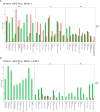

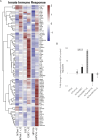





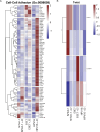










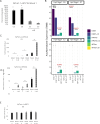
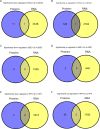
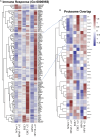

Similar articles
-
Fibroblasts regulate the transcriptional signature of human papillomavirus-positive keratinocytes.Tumour Virus Res. 2025 Jun;19:200302. doi: 10.1016/j.tvr.2024.200302. Epub 2024 Dec 10. Tumour Virus Res. 2025. PMID: 39667669 Free PMC article.
-
Suppression of Stromal Interferon Signaling by Human Papillomavirus 16.J Virol. 2019 Sep 12;93(19):e00458-19. doi: 10.1128/JVI.00458-19. Print 2019 Oct 1. J Virol. 2019. PMID: 31292244 Free PMC article.
-
RNA-Seq Analysis of Differentiated Keratinocytes Reveals a Massive Response to Late Events during Human Papillomavirus 16 Infection, Including Loss of Epithelial Barrier Function.J Virol. 2017 Nov 30;91(24):e01001-17. doi: 10.1128/JVI.01001-17. Print 2017 Dec 15. J Virol. 2017. PMID: 29021401 Free PMC article.
-
Pathogenic Role of Immune Evasion and Integration of Human Papillomavirus in Oropharyngeal Cancer.Microorganisms. 2021 Apr 21;9(5):891. doi: 10.3390/microorganisms9050891. Microorganisms. 2021. PMID: 33919460 Free PMC article. Review.
-
Modelling human papillomavirus biology in oropharyngeal keratinocytes.Philos Trans R Soc Lond B Biol Sci. 2019 May 27;374(1773):20180289. doi: 10.1098/rstb.2018.0289. Philos Trans R Soc Lond B Biol Sci. 2019. PMID: 30955493 Free PMC article. Review.
References
Publication types
Grants and funding
LinkOut - more resources
Full Text Sources
